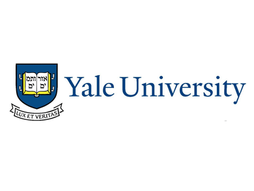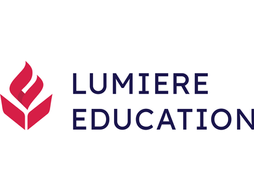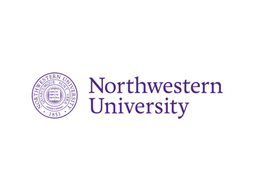NASA's Space Place Art Challenge for Middle Schoolers: 6 Tips to Win
Middle school is a pivotal time to develop your talents, with more opportunities to stand out from your peers and strengthen your profile for high school and college. If you have an artistic bent and a passion for science, participating in competitions like NASA's Space Place Art Challenge can give you a unique edge while applying to college. This challenge, hosted by one of the world’s leading aerospace agencies, offers an enriching experience that enhances both your artistic and scientific skills. In today’s blog, we’ll explore the NASA Space Place Art Challenge for high schoolers, and 6 tips to help you win!
What is NASA’s Space Place Art Challenge?
The NASA Space Place Art Challenge invites middle school students to express their creativity through art, with a twist of science. Each month, NASA provides a new challenge prompt that encourages students to explore space-related concepts and illustrate them in any medium they choose — whether it's a sketch, painting, or mixed media. This initiative is designed to bridge the gap between art and science, fostering a creative environment where students can learn about space while showcasing their artistic talents. The best submissions are featured on the NASA Space Place website, providing students with valuable exposure and adding a mark of prestige to their academic and artistic profile.
Is it prestigious?
While the Space Place Art Challenge may not offer monetary rewards, its association with NASA lends it a significant level of prestige. The Space Place Art Challenge is a competition that garners plenty of attention both nationally and internationally. Since it’s open to all middle schoolers, you will get to compete against some of the most creative minds in the world. This also offers a glimpse into diverse interpretations of scientific concepts, enriching your experience and learning. Due to its association with NASA, we rate this challenge as slightly prestigious – not something that will make or break your profile on its own, but a good-to-have that is easy to participate in and learn from.
Who is eligible to participate?
To enter the NASA Space Place Art Challenge, you must meet the following criteria:
Be a middle schooler (grades 5 through 8).
Both national and international participants can apply.
You must be enrolled in a middle school program.
How is the competition structured?
The Space Place Art Challenge operates on a rolling basis – each month, a new challenge prompt is posted on the NASA Space Place website. These prompts provide detailed context on NASA’s operations as a way to prime your thinking process, and then pitch a unique situation to invite artistic submissions. For example, the current challenge prompt is:
“If you were sending commands from Earth to a faraway spacecraft, or a robotic explorer on another planet, what would you tell it to do? Would you tell a space telescope to take a photo of your favorite star? Would you tell a rover on Mars to draw a giant heart with its robotic arm?
Draw an antenna on Earth, and the spacecraft or robotic explorer you’d imagine it would talk to. Use any materials you would like – crayons, markers, pencils, pens, aluminum foil, paint, yarn, or anything else you find. The sky's the limit!”
At the end of the month, the submissions are collected and the best-rated ones are displayed prominently on the Space Place website.
The submission may be in the form of a sketch, a crayon drawing, a painting, or whatever else you may like to use. You will need to have an adult take a photo or scan of your submission and email the following to NASAKidsArt@jpl.nasa.gov:
Picture of drawing
Your first name
Your age
Six tips to help you win
Here are a few tips that we hope will help your submission get selected:
Understand the science behind the art: Take the time to research the scientific concept behind the prompt. This not only enhances your understanding but also allows you to create a more informed and unique piece of art.
Originality counts: Creativity is key. Building on from the previous tip, uniqueness is extremely important when you’re competing with potentially hundreds of entries. Don’t be afraid to think outside the box and offer a fresh perspective on the challenge.
Focus on the details: Pay attention to the details in both the scientific and artistic elements of your work. Precision can make a big difference in the quality of your entry. Pay attention to small details that can make your art more compelling and accurate.
Seek feedback: Before submitting your work, get feedback from teachers or mentors who understand both art and science. Constructive criticism can help you refine your vision and present the best version possible.
Presentation matters: Ensure that the final presentation of your artwork is clean and professional. The way your work is displayed can influence its impact. Both your original work, and its scan, should be clean and clear so that each element of your work shines through.
Use media you’re comfortable with: Stick to the tools and materials you know best. Whether you prefer pencils, paints, or digital media, using what you’re familiar with will allow you to focus on creativity rather than technical challenges. It will allow you to be passionate and creative without worrying about how to manage a new medium. If you look at the previously shortlisted submissions, the medium you use has no bearing on selection, only the novelty of your work and the talent on display!
One other option - Lumiere Research Scholar Program
If you’re interested in learning about aerospace and STEM in a more structured fashion, you could also consider applying to one of the Lumiere Research Scholar Programs, selective online high school programs for students founded with researchers at Harvard and Oxford. Last year, we had over 4000 students apply for 500 spots in the program! You can find the application form here.
Also check out the Lumiere Research Inclusion Foundation, a non-profit research program for talented, low-income students. Last year, we had 150 students on full need-based financial aid!
Stephen is one of the founders of Lumiere and a Harvard College graduate. He founded Lumiere as a PhD student at Harvard Business School. Lumiere is a selective research program where students work 1-1 with a research mentor to develop an independent research paper.









